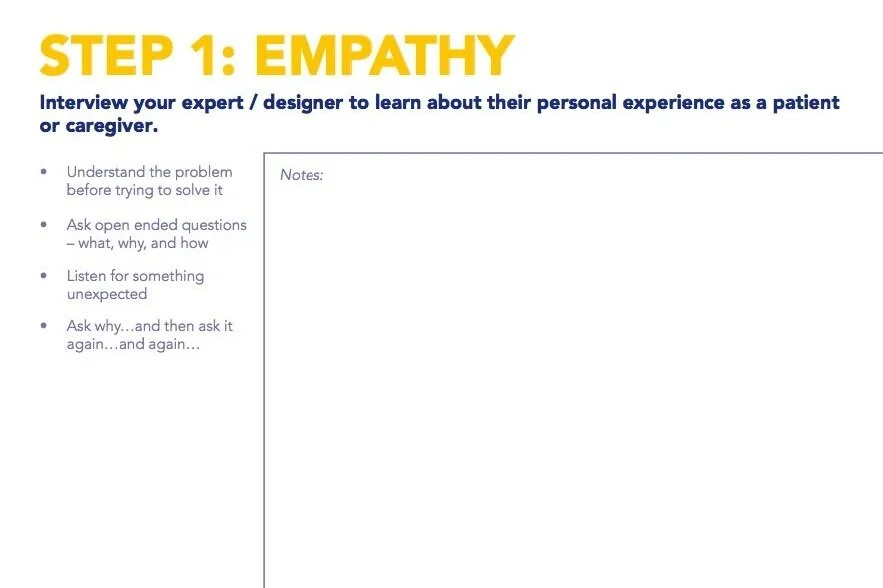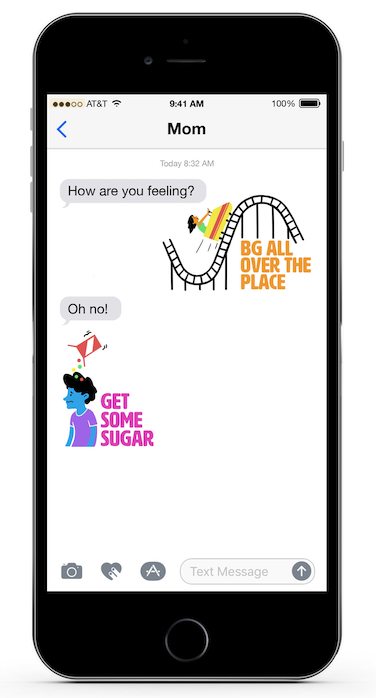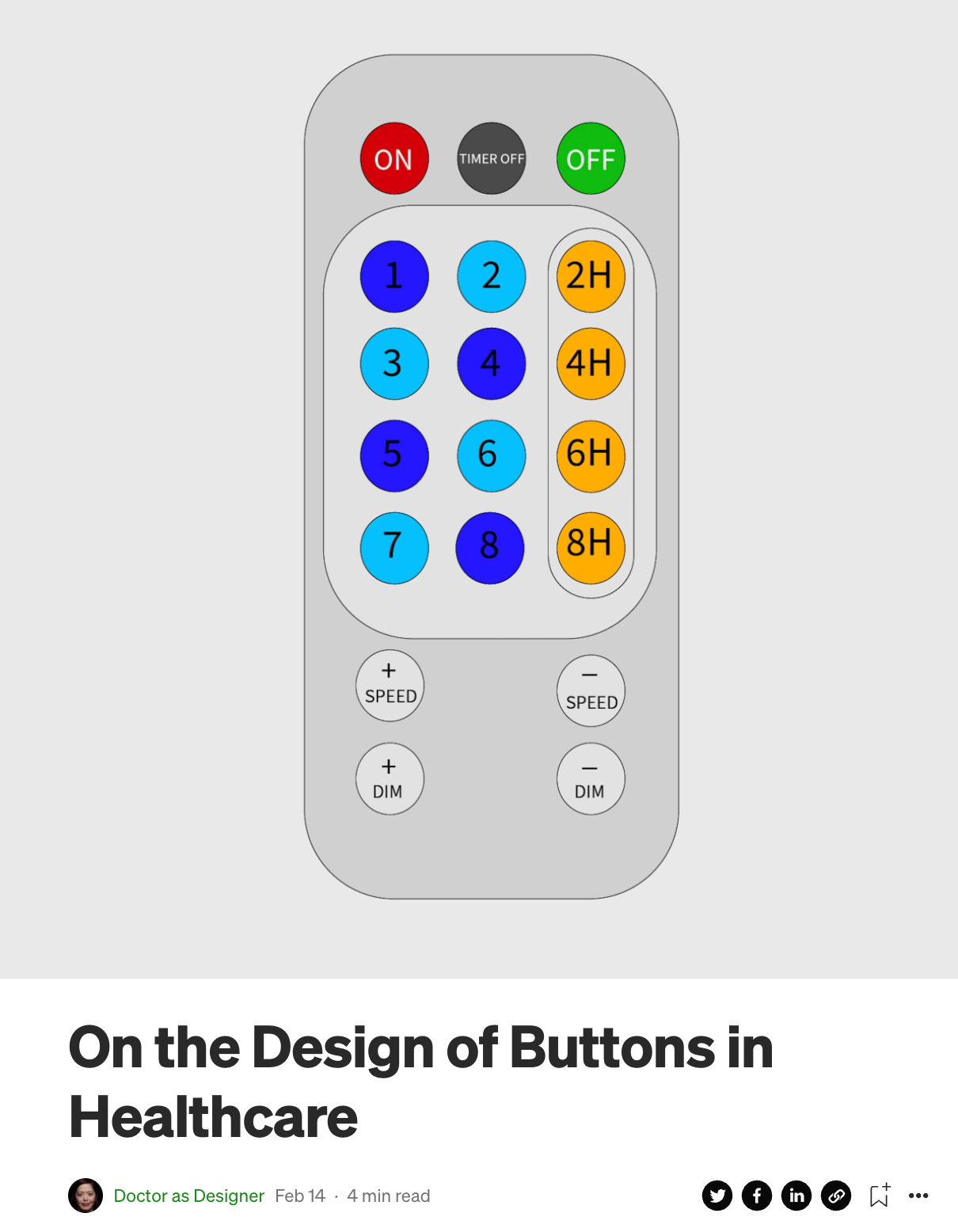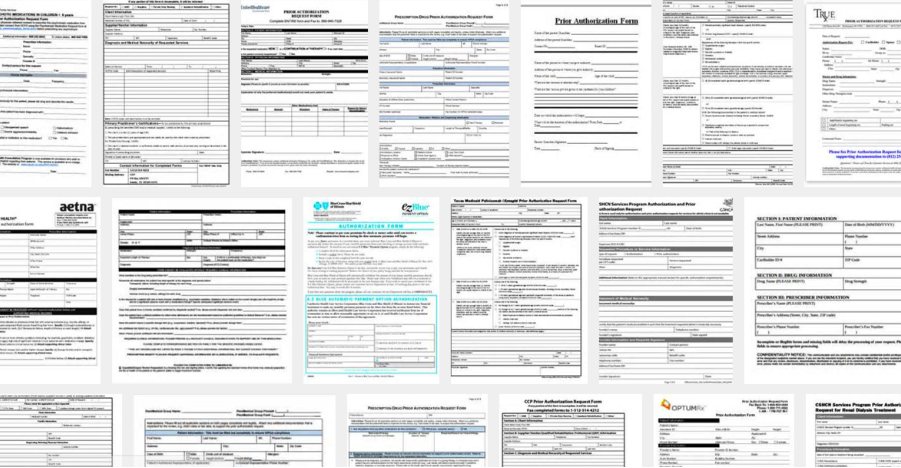Design
My identity as "Doctor as Designer" started as a question on the title slide of my 2013 talk at the Cusp Design Conference. I am trained as a pediatrician, diabetes specialist, and researcher, but I am fascinated by the world of design and how it moves light years ahead of the healthcare setting. In this talk, I asked "Who can call themselves a designer?" not as an attempt to minimize the role of designer, but to pose the questions: what does it mean to design, and who is involved in the process?
I blog about the intersection of design and healthcare under the Doctor as Designer moniker here, and I have shared my thoughts about the the need for design in healthcare at a variety of academic and innovation conferences and I was an advisor to a report on the Human-Centered Health System, presented at the World Innovation Summit for Health.
I am committed to design for health through the application of a Learning Health Systems framework. (Click here to learn more). This requires leveraging health information technology and the electronic health record to support measurement and intervention, improving the quality of care for children in delivery systems, and incorporating methods of patient-driven design thinking. I engage in these activities through my roles as Associate Chief Medical Information Officer for Pediatric Research, Associate Chair for Health Metrics and Learning Health Systems, and Ambulatory Care Clinical Chief for Pediatric Medical Subspecialties.
In my efforts to integrate design with healthcare, I co-founded a collaborative innovation network called HealthDesignBy.Us, which supports the vision of patients and caregivers as experts, makers, and collaborators in the creation of health tools, technologies, and systems (see my TEDx Detroit and Edge talks). We support the integration of the Maker Movement into healthcare to aid in this mission and to facilitate local and large-scale collaboration among patients, healthcare providers, technology experts, designers, and tinkerers. Watch these amazing talks from one of our #makehealth events to learn more about making.
Are you looking for resources to learn more about design? Scroll to the bottom of this page to look for books, resources, courses that might be of interest.
Talks
My Talk on Design Thinking for the MCIRCC Reimagining Critical Care Seminar Series. Scroll down to see the Twitter Moment I created for this talk.
Design Workshops
In conjunction with HealthDesignBy.Us and research collaborations, we have conducted a variety of participatory design/maker workshops. Here are some examples of slides and tools that we have used for these workshops and here is an academic publication about this work conducted in the Cardiovascular Center conducted through the fantastic collaboration of colleagues from Fast Forward Medical Innovation: “A Patient-Centered Design Thinking Workshop to Improve Patient-Provider Communication in Cardiovascular Medicine”.
Patient-driven Design
MAKE Research
The PCORI funded Mastering Adolescents’ Knowledge and Engagement in Research (MAKE:Research) program was designed to teach teens with type 1 diabetes about the research process through the lens of Maker culture and technology. Through a series of workshops, they built interactive LED accessories that could respond to different types of data input. They then conducted research studies, designing their own research questions related to their T1D, and used their LED accessories to display their results in an engaging way. Check out a success story here: https://www.umpedsdiabetes.com/patientsuccess
Diabetemoji Stickers
The idea for the Diabetemoji sticker pack came from a participatory design workshop sponsored by HealthDesignBy.Us. Patient experts with type 1 diabetes and their caregivers worked with a multidisciplinary team of University of Michigan students, faculty, and staff, and outside community partners to work through the design thinking process (empathy, defining the problem, ideating solutions, paper prototyping, and iterative testing). Patients and caregivers were active participants
throughout the process and in the co-design of solutions.
The Problem: "It’s annoying to get lots of text messages from your mom about diabetes stuff when you are a teenager with type 1 diabetes.”
The Solution: Make communication easier between parent and child through the use of diabetes emoji.
Paper prototypes of the icons were developed by type 1 diabetes experts Reece and Olivia Ohmer and their mother, Amy Ohmer. Jacob Dwyer (U-M Stamps Alumnus) revised and created icons for version 2.0 of the app. Diabetemoji: Hacking Healthcare Emojis to Illustrate Diabetes
-Diabetesmine
Writing
For a full list of blogposts, please visit my Writing page.
Design Resources
Are you interested in learning more about design? Here is a list of resources that I think are useful, which I am constantly curating:
1. Check out this blogpost which I will be continually updating:
2. I receive a lot of communications from healthcare stakeholders interested in design. Here are some of my thoughts on healthcare and design:
“On what it takes to effectively design the future of healthcare — my conversation with Joyce Lee”
Dear Medical Designer: Should I give up medicine to do design?
Healthcare Provider: Think Like a Designer! Goal-Directed Design in Healthcare
“Design is not a department” Creating a culture of design in healthcare
“A Design Thinking Problem Every 15 Minutes: The Privilege of a being a Healthcare Stakeholder”
3. You should follow these interesting health designers on Twitter: Dennis Boyle, Annie Valdes, Abbe Don, Stacey Chang, Paul Bennett, Aaron Sklar, Lenny Naar, Matt Trowbridge, Jose Gomez-Marquez, Bon Ku. What is the ROI on design? Read the annual Design in Tech Report from John Maeda.
4. Check out these conferences, workshops, and courses about design. I haven’t attended them but they do look very interesting!
https://www.cooper.com/training
https://www.nngroup.com/training/
https://healthexperiencedesign.com/
https://www.luma-institute.com/products-and-services/training/
https://rosenfeldmedia.com/public-workshops/
https://www.thedesigngym.com/workshops/




















